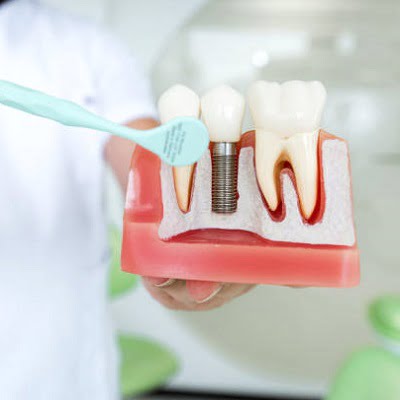
If you’re thinking about getting dental implants, you might be curious about how they’re held in position. Dental implants in Islamabad are a great method to replace missing teeth because they offer a long-term solution that feels and appears natural. This article will examine the implant post, abutment, and dental crown as well as other components that keep dental implants in position.
What Are Dental Implants?
Let’s first define dental implants so that we can discuss how they are fixed in position. A dental implant is a small post that is surgically inserted into the jawbone to substitute a missing tooth’s base. It is made of biocompatible materials, such as titanium. A dental crown is then attached to the top of the implant to substitute the missing tooth once the implant has fused to the bone.
The Implant Post:
The base of a tooth implant is the implant post. It is surgically implanted into the jawbone and is composed of a biocompatible substance, typically titanium. The post acts as the tooth’s substitute root and gives the dental crown a secure foundation. The goal of the implant post is to integrate with the jawbone over the course of osseointegration, a procedure that takes several months to complete.
The Abutment:
An abutment is a small connector that is affixed to the top of the implant post after the implant post has fused with the jawbone. The tooth crown and the implant post are connected by the abutment. It is generally screwed into the implant post and is made of metal, usually titanium. The dental crown’s shape and size are meticulously considered, and the abutment is made to the patient’s specific requirements.
The Dental Crown:
The dental implant’s obvious component, the dental crown, is joined to the abutment. It is made specifically to fit the patient’s natural teeth’s size, shape, and colour. Typically, porcelain or clay is used to create the dental crown, giving it a look that is very similar to that of real teeth. Dental cement or nails are used to firmly fasten the crown to the abutment.
Factors That Affect Implant Stability:
Several factors can affect the stability of dental implants, including:
Jawbone Density:
The security of the implant is significantly influenced by the jawbone’s density. The implant may not be able to fuse correctly if the jawbone is not dense enough, leading to implant failure. To increase jawbone density and enhance implant security, a bone graft may occasionally be required.
Implant Size and Shape:
The stability of the implant can also be impacted by the size and form of the implant post. Too-small or too-short implants may not be able to hold the dental crown adequately, while too-large implants may harm the adjacent teeth and gums.
Implant Placement:
The location of the implant in the jawbone can also affect implant stability. Implants placed in the front of the mouth, where there is less jawbone density, may require additional support, such as a bone graft or a longer implant post.
Conclusion:
Dental implants are an excellent method to restore missing teeth and offer a long-term solution that feels and looks like natural teeth. Dental implants are kept in position by three different components: the implant post, the abutment, and the dental crown. The density of the jawbone, the size and shape of the implant, and the location of the implant are all variables that can influence implant stability. You can decide whether dental implants are the best option for you by being aware of what keeps dental implants in position.
Contact SKN Cosmetics Islamabad for further details. You can contact us by calling us directly or also by filling out the form given here.







Book your Appointment